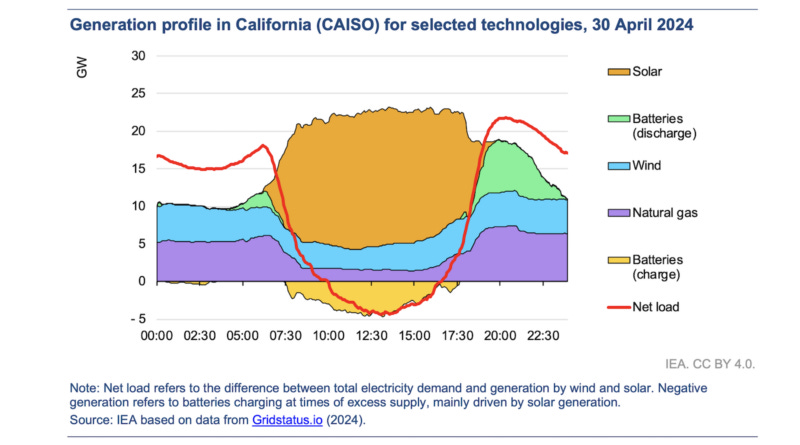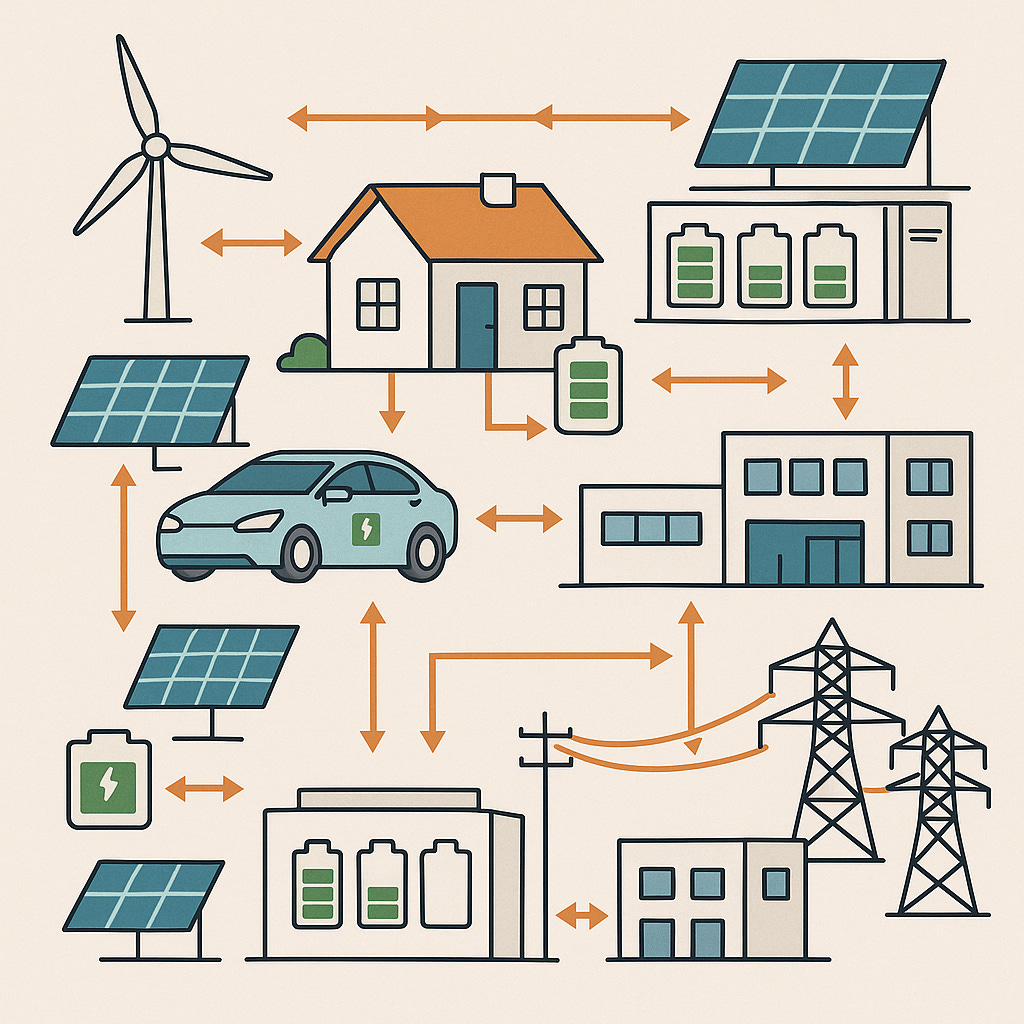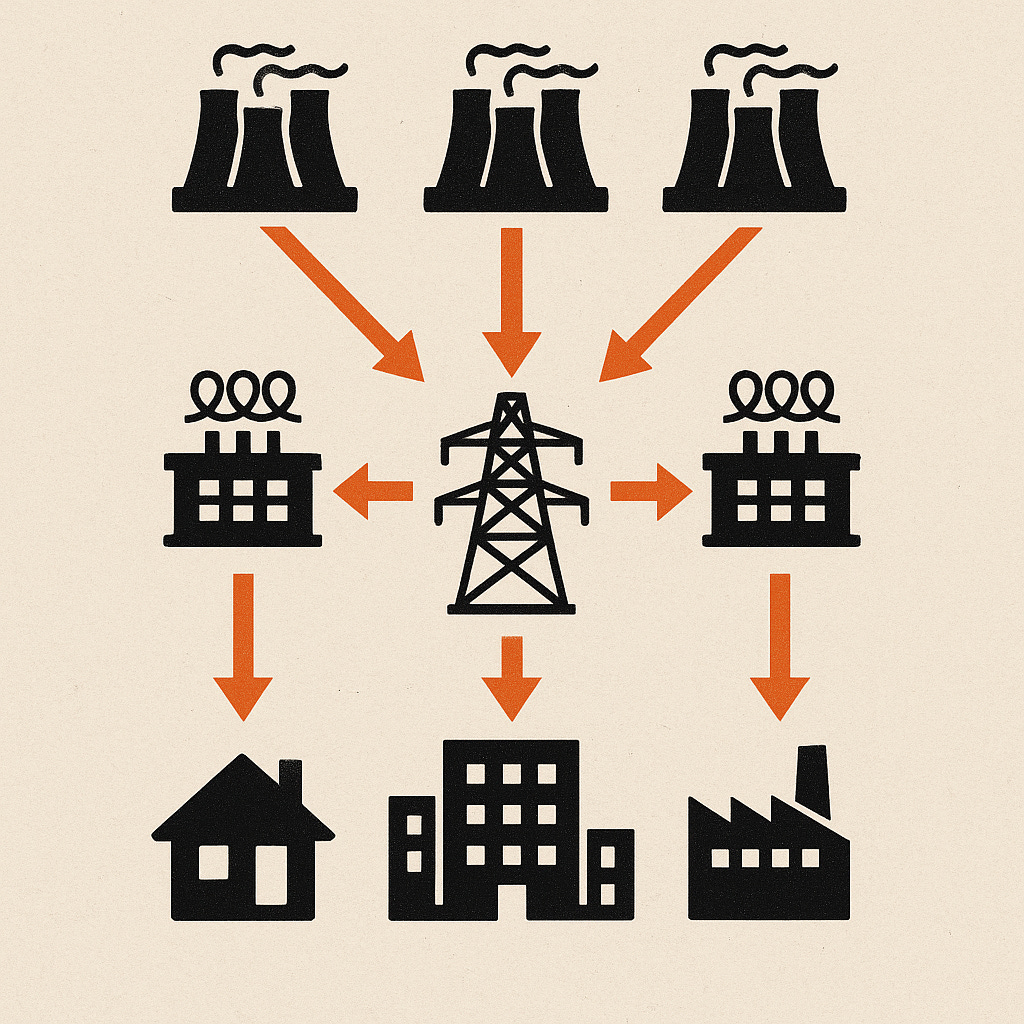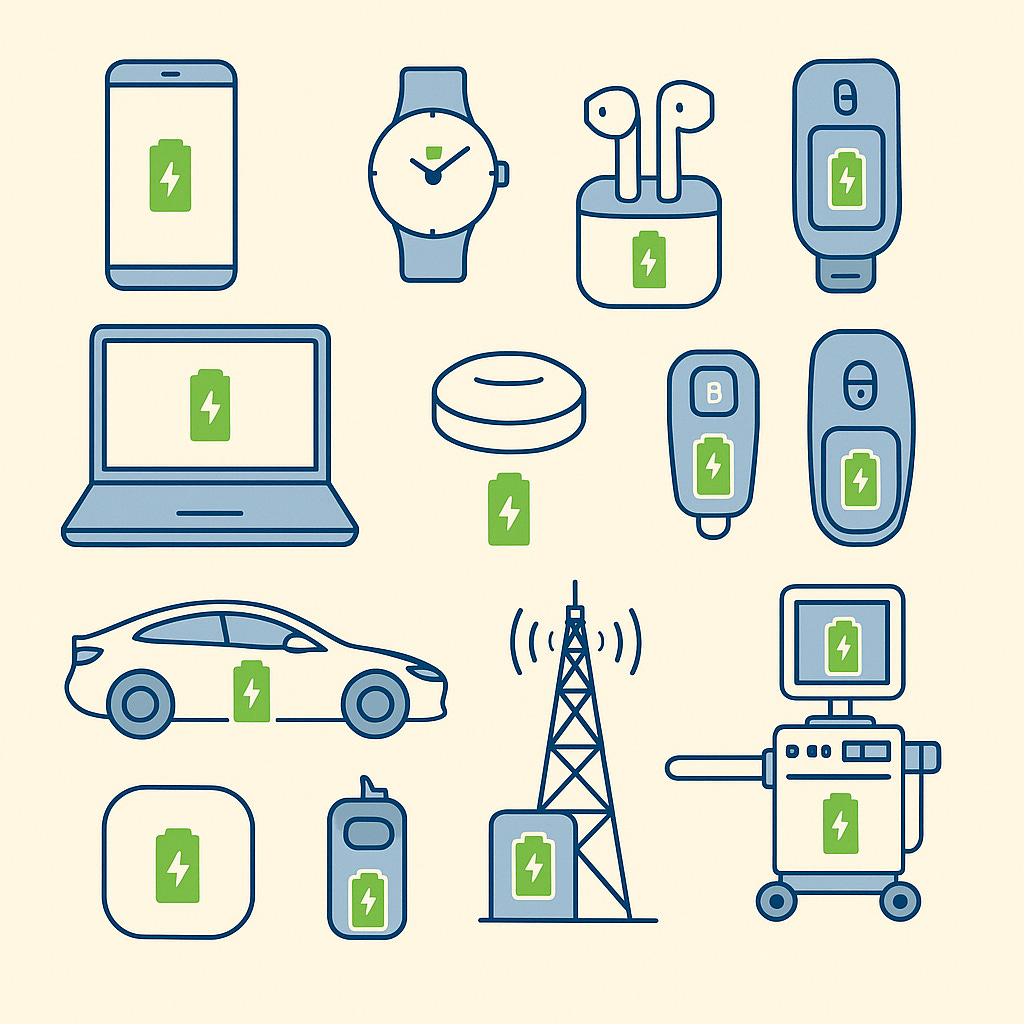Battery Power vs. Hypermasculinity
Renewables + Storage = The Death of the Combustion Cult Hierarchy

“Woke” has come for America’s power grid—and it’s about time. The old 20th-century hypermasculine top-down architecture of centralized fossil and nuclear plants is rapidly giving way to an interactive, responsive, decentralized clean-energy grid. It’s a welcome development that—once fully realized—will deliver cheaper and far more reliable electricity for everyone. But certain men—who seem to be overrepresented in energy comment threads—are absolutely terrified about the collapse of the old, authoritarian combustion-driven system.
—you know who you are—
They are obsessed. And they’ll rip you apart like hyenas if you try to explain energy facts to them. And they’re also weirdly (or not so weirdly) enchanted by the dying technology of nuclear fission. Contradict them and they’ll pounce—often with a slur about your intelligence or sexuality. The only other topics that produce such reliable bile involve race and religion. And that’s no coincidence: Many of these fossil/nuclear simps are also white, male conservative Christians.
What is electricity?
Before we explore this latest skirmish in the war on reality, let’s go back to first principles: understanding what electricity is. Seems obvious. It’s what “makes things go,” but most people have no real understanding beyond metaphor. So let’s dig in.
Electric current is the flow of electrical energy through a conductor—most often copper or aluminum in power systems—carried by electrons, the tiny negatively charged particles in the outer shell of atoms. Those electrons don’t stream from one end of a wire to the other at high speed. Instead, the electric field created by a power source ripples through the conductor at nearly the speed of light, and the electrons collectively shift in response. This cascade moves energy thousands of miles in a fraction of a second, even though each electron’s actual drift is far slower. That moving electric field can do work: spin a motor, light a bulb, or charge your phone. In a fossil, hydroelectric or nuclear plant, the process starts when a turbine spins a generator. Inside the generator, a coil of wire rotates within a magnetic field; the changing magnetic flux induces an electric field, pushing on the electrons in the conductor and delivering power almost instantly across the grid.
Batteries, on the other hand, store energy as electrochemical potential. A redox reaction moves electrons between two different materials—the electrodes—through an external circuit. One electrode (the anode) undergoes oxidation, releasing electrons, while the other (the cathode) undergoes reduction, accepting electrons. You can use the old mnemonic LEO says GER. (“Loss of electrons is oxidation, gain of electrons is reduction.”)
Between cathode and anode is an electrolyte that lets ions flow inside the battery to balance the charges as the reaction proceeds. When you connect the battery to a device, negatively charged electrons flow from the negative terminal, through the device you’re powering, and into the positive terminal. The process continues until the chemicals in the battery have all reacted—and can no longer sustain a useful voltage. Then the chemicals must be replaced, or the redox reaction reversed, through recharging.
The world’s largest machines
Power grids are the world’s largest machines: interconnected webs of power plants, substations, transformers, and transmission lines stretching across entire continents. All of it is synchronized so that every outlet delivers the same steady rhythm—60 cycles per second in the U.S. (that’s 60 hertz, meaning the alternating current reverses direction 60 times each second). Some other nations use 50 hertz. These frequencies represent the heartbeat of their respective grids. Motors, appliances, and electronics are designed to work at the exact grid frequency, and if it drifts too far, equipment can fail or power plants can trip offline.
Traditionally, this steady rhythm comes from rotating machinery—turbines turning generators—where the physical spin directly sets the electrical frequency (alternating current or AC). Batteries can also feed grids. But they store direct current (DC), which doesn’t naturally oscillate. So their direct current must pass through power electronics—solid-state devices like insulated-gate bipolar transistors (IGBTs) and MOSFETs—inside an inverter. These components rapidly switch the DC on and off in carefully timed pulses to synthesize a smooth sine-wave alternating current that’s perfectly matched in voltage, frequency, and phase to the existing grid signal. Once inverted—at the connection point—there’s no functional difference between energy from a spinning turbine and energy from a battery: both are synchronized AC power.
The grid’s function is simple to describe—but brutally hard to execute: supply and demand must match every second of every day, regardless of weather, equipment failure or human chaos. Too little supply and the frequency drops as turbines slow down grid-wide under the strain; too much, turbines speed up and frequency rises. Go too far either way and the grid fails. The entire machine exists to maintain that perfect balance.
By the mid-20th century, the U.S. grid operated under a regime shaped by the Federal Power Commission (predecessor to today’s FERC) and the Rural Electrification Administration: big, centralized plants feeding long transmission lines, one-way power flow from generator to customer, and demand met almost entirely by adjusting generation output. Utilities forecast load a day ahead and kept “spinning reserve” online—extra generators already running so they could quickly pick up slack if something failed. In the first seconds after a problem, stability came from the sheer mechanical inertia of the massive 60-hertz machines turning inside those plants, which kept the grid’s frequency steady until operators could adjust output.
In the 21st century, that architecture is woefully obsolete. Today’s grid is becoming interactive: battery storage connected to smart inverters can inject or withdraw power in milliseconds, responding to conditions as they happen. Instead of “spinning reserve” backed by a top-down command structure, it’s evolving into a real-time negotiation between millions of endpoints, with high-speed sensors and automated controls replacing mechanical inertia as the primary stabilizer. It’s a tectonic shift—from a slow, one-way industrial machine into a fast, two-way digital organism.
Batteries are key to everything
Start with a fact: every convenience that makes modern life possible already depends on the small army of batteries you have at your disposal. These are even more critical than the power grid—while being dependent on it. They’re in your phone, your laptop, your watch, your earbuds, your TV remote, your car key fob, the pacemaker that keeps your heart beating, the smoke detector that protects you from fire, the Wi-Fi router that rides through brief outages, the backup pack in a cell tower, the bank of UPS units in a data center, the emergency systems in an airplane, and the life-support machines in a hospital. Batteries keep spacecraft alive while in shadow, cameras rolling, and submarines gliding in silence. Without them, modern life would shudder to a halt.
Here’s another fun detail: your car—gas or electric—still won’t start without a battery. And not just any battery—it’s the same classic 125-year-old 12-volt lead-acid design that cranks a billion starter motors every day and powers ignition electronics. Even in most modern EVs, the massive lithium-ion traction pack that drives the wheels doesn’t replace that humble 12-volt workhorse, whose only mission is to provide standby power to the car’s brain so the big battery can get to work.
Scale up a little more:
Data centers run on massive battery banks that keep servers humming until diesel generators kick in. Without them, even a brief hiccup in the grid could erase vital records or knock your favorite streaming service offline mid-episode.
Hospitals keep operating rooms and life-support equipment running on battery backup until generators take over.
Cell towers rely on battery power when the grid goes dark, keeping emergency calls and disaster communications flowing.
At grid-scale, batteries store excess energy throughout the day when the sun is flooding the grid, and release it at 6-7 PM when demand surges and prices spike. The effect is profound: batteries flatten peaks, preventing daytime “curtailment” (waste of energy), fill valleys like the “duck curve” when the sun goes down and people come home and turn on appliances. This gives grid operators a flexible tool that spinning fossil-fueled or nuclear turbines simply can’t match.
California is already living this future: its grid-scale battery fleet has passed 10 gigawatts of capacity—about 40 gigawatt-hours of stored energy—spread across many sites. Batteries have already replaced perhaps a dozen gas-peaker plants while slashing electricity imports from neighboring states. This isn’t a pilot project or a theory—it’s prime-time reality—happening every day without fail in the world’s fourth largest economy.
Why do grid batteries and EVs piss off so many men?

Armchair power-grid engineers and gas and diesel fans never seem to know when they’re in over their heads—or when to shut the fuck up. You can guess their demographic: overconfident combustion guys, overwhelmingly white, marinated in testosterone. They love machines that go boom—loud pipes, roaring engines. They love that single point of control: the throttle, the boiler, the turbine shot through with hot plasma. They love nuclear because it’s the most concentrated fire on Earth—pure dominance—run by a tiny priesthood at the center, pushing juice out to the obedient masses.
“Give me fuel, give me fire, give me that which I desire!” — Metallica, 1997.
What they don’t understand is systems. Or the silent fury of stored electrons that keep California humming, day and night, and propel dead-quiet EVs like a rocket. They know what a kilowatt is—power in the moment—but not a kilowatt-hour, which is energy over time. They mangle ideas like capacity factor, the percentage of a plant’s maximum potential it actually produces over a year. They constantly whine about batteries failing, or EV charging difficulties. They struggle to understand levelized cost of energy (LCOE), the average cost to produce electricity over a plant’s lifetime. They don’t know the “duck curve,” the daily shape of solar power flooding the grid midday and crashing at sunset while demand surges.
These guys picture the grid like it’s 1955: a giant plant sized for the absolute peak, blasting one-way power down the lines and wasting capacity the rest of the time. That’s what they mean when they invoke “baseload”—and they ALWAYS do: plants that run at a constant output to cover the minimum demand, regardless of how the actual load rises and falls. They treat this as a virtue, when in reality it’s inflexible and often forces the grid to waste energy or curtail cleaner, more dispatchable generation. Meanwhile, modern grids use dynamic balancing, constantly adjusting generation, storage, and demand to keep everything stable, efficient, and affordable.
This isn’t just ignorance—it’s psychopathology.
The centralized, top-down model refuses to die: daddy provides, mommy consumes. It’s emotionally satisfying to minds programmed to see themselves perpetually on top—as “prime movers” on which everyone else depends. Ayn Rand borrowed the term from Aristotle, stripping it of its original philosophical meaning and recasting it as her ideal human type: the self-created genius whose effort supposedly makes all life possible.
In her ultra-reactionary novels, that “prime mover” becomes the god of her secular religion: Atlas as deity, “takers” as sinners, the shrug as judgment day. The plotline is identical to biblical salvation myths, only repurposed to glorify modern disaster capitalism.
Renewables decimate that story. They’re bottom-up, distributed, and matched to demand in milliseconds. An electron from someone’s home battery is identical to one from a nuclear power plant. Batteries enable energy democratization, making the grid behave more like a human community: responsive, cooperative, and resistant to domination from a single point.
For authoritarian personalities, the loss of that hierarchy is a nightmare.
Sure, a lot of anti-battery noise is AstroTurfed by fossil money, because every new kilowatt-hour of grid battery capacity reduces the capacity factor—and long-term viability—of gas peaker plants and nuke plants.
But the emotional resistance is purely human. The grid isn’t just wires—it’s a metaphor for power itself. A flexible, self-balancing, peer-to-peer grid is a preview of a flexible, self-balancing, peer-to-peer society.
The combustion cult isn’t worried about batteries failing. They’re worried about them succeeding. When that happens, no one will ever build a combustion plant again.
And they know it!
The combustion cult also knows, but won’t admit:

A battery doesn’t have to run the whole grid for 24 hours to matter. Even a few hours of storage can:
Shave the evening peak so we don’t need to fire up every gas plant in the state.
Keep the frequency steady so the whole system doesn’t crash.
Store cheap surplus and release it during expensive scarcity.
Replace spinning reserve so we burn less fuel.
The armchair critic takes total battery storage, divides by 24 hours, and declares it “useless.” They’ll claim batteries “produce no energy” as if anyone ever said otherwise. Or they’ll spiral into paranoid nonsense about battery fires—while defending nuclear reactors that leave behind radioactive waste which is deadly for millennia.
Show them CAISO’s own charts—batteries discharging 10 gigawatts every evening, imports down, gas peaker use falling dramatically—and they’ll post laugh reactions and double down on their fossil-fueled (or nuclear) lunacy anyway. Because this isn’t really about the grid.
It’s the loss of their identity.
The grid is evolving from rigid hierarchy to cooperative network. From command-and-control to continuous negotiation. From dependency on a “father provider” to mutual accountability. For people whose identity depends on unearned dominance, that’s the apocalypse. It’s their stunted version of masculinity dying.
And here’s the final joke:
They post their battery hate from battery-powered phones and laptops, through towers powered by battery backups, routed through data centers sitting on UPS batteries, under LED lights stabilized by a grid increasingly balanced by… batteries.







Awesome article! Nailed so many of the characteristics of these anti-technology cavemen.
This is an excellent and informative article. I don’t know anything about the social aspects of power, but the article was fascinating nonetheless. Thank you!